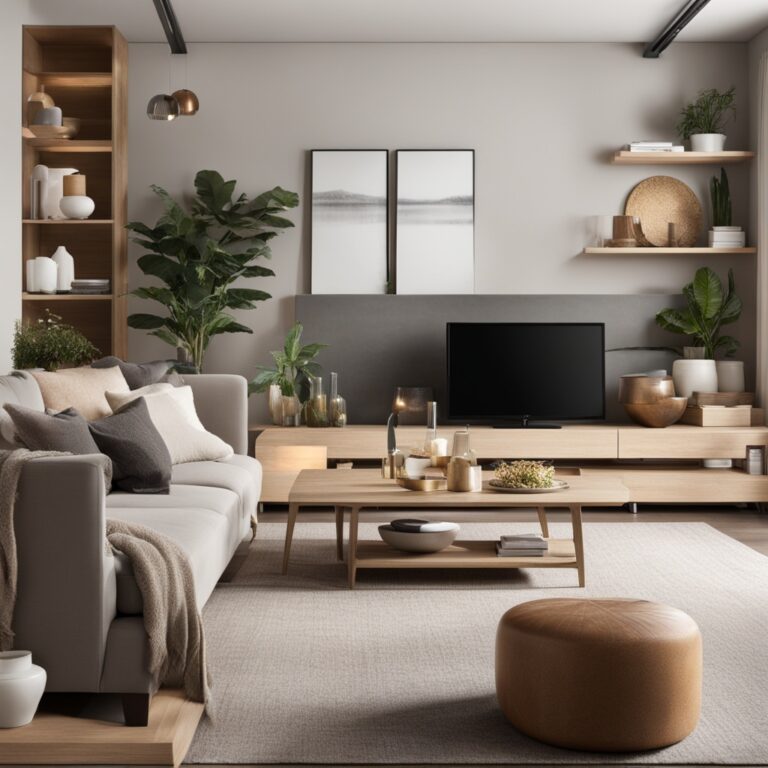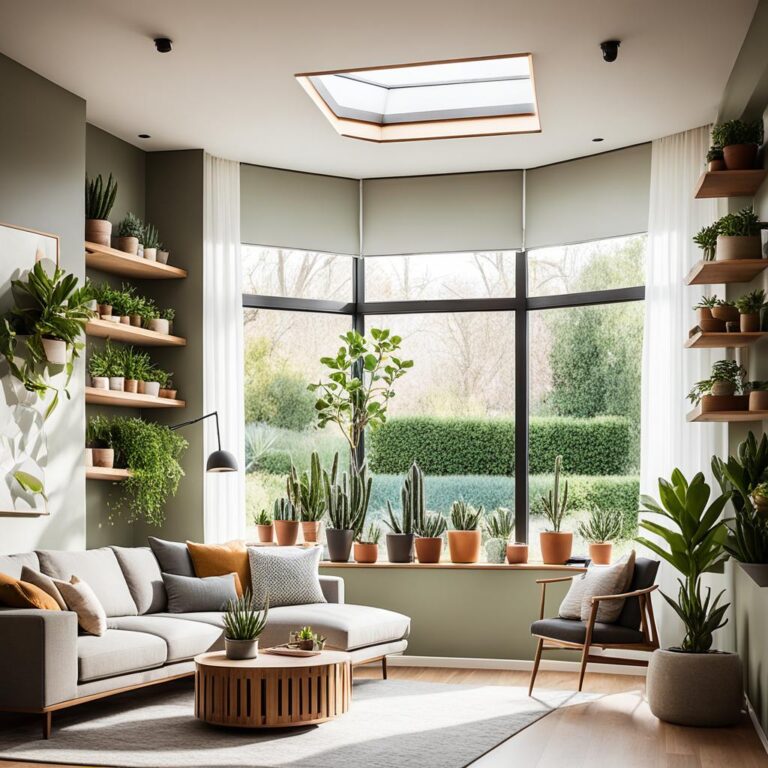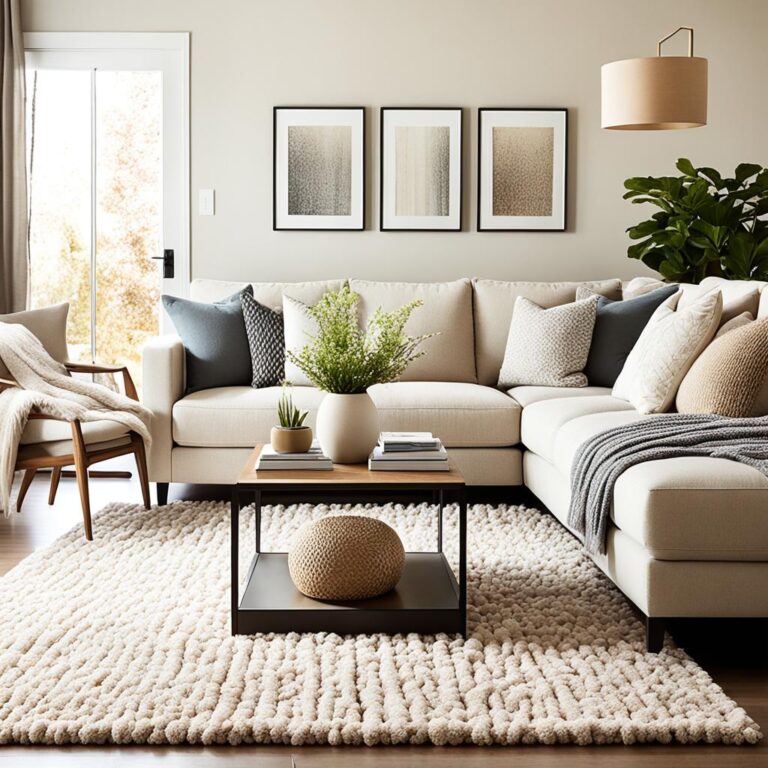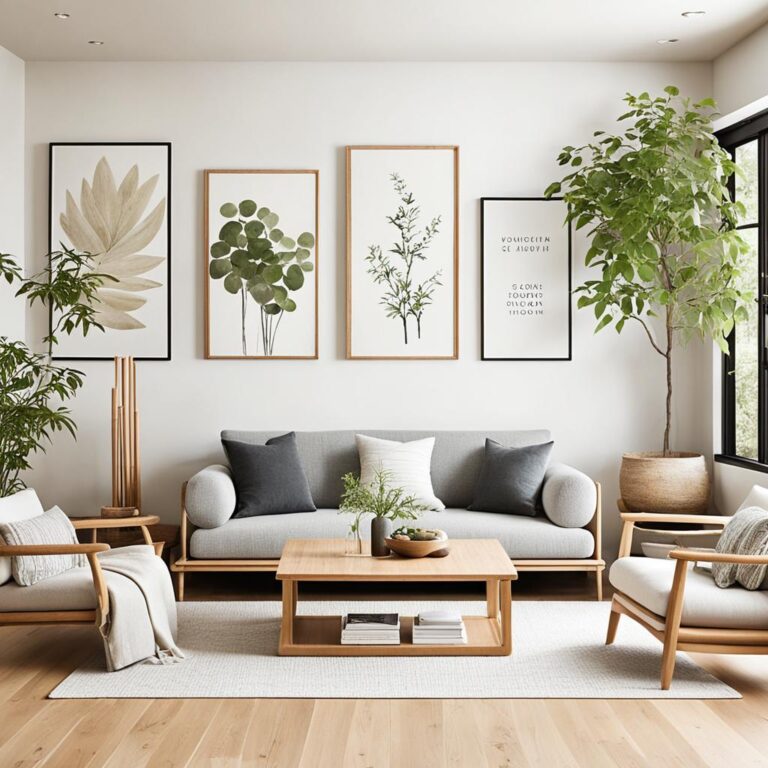Embrace Serenity: Living Room Japandi Style Ideas
The art of living room japandi design combines Japanese minimalism with Scandinavian functionality. It focuses on tranquility and simplicity. This approach creates spaces that are both calm and stylish. By using clean lines and natural materials, you can make your living room a peaceful retreat.
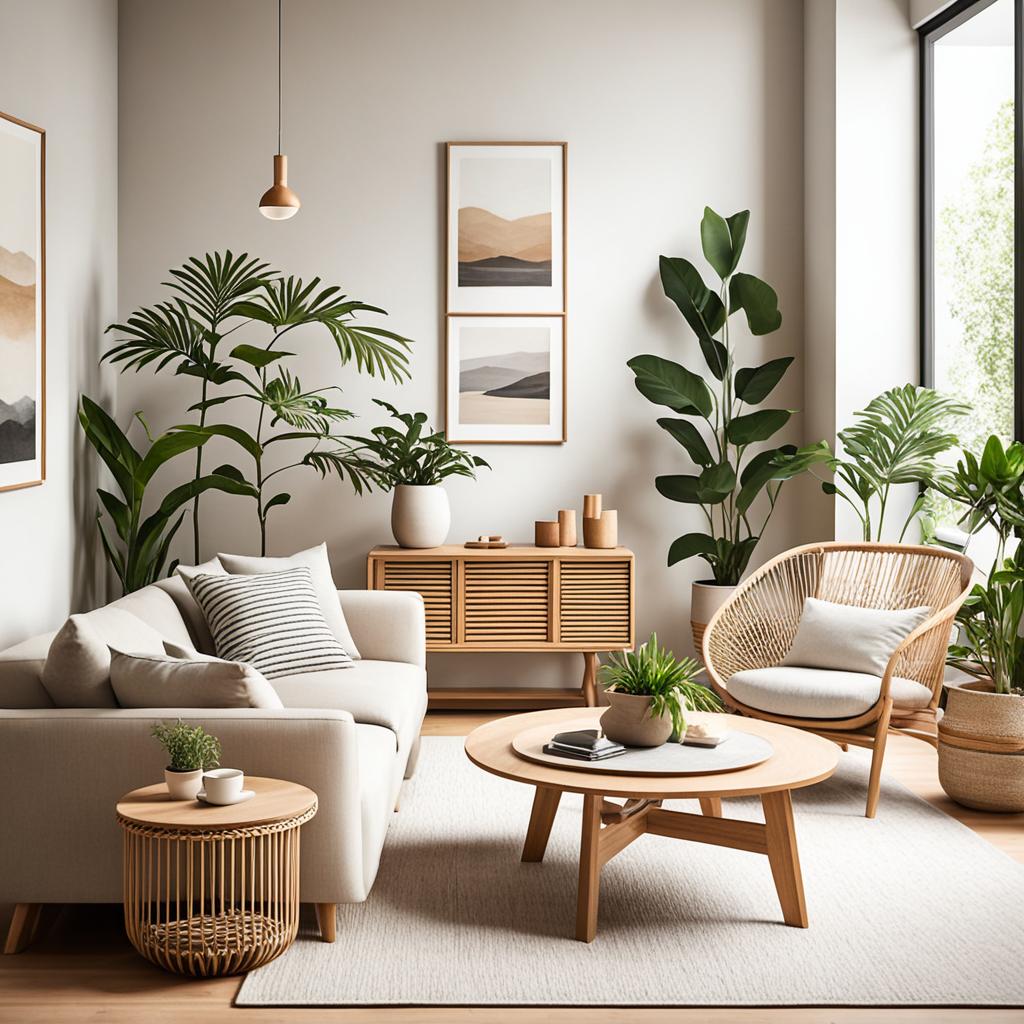
Explore japandi decor ideas to create a serene space. Enjoy the beauty of minimalism without losing comfort and character. This style is perfect for those who love simplicity and elegance.
Key Takeaways
- Japandi style blends Japanese and Scandinavian design principles.
- Natural materials play a vital role in creating a serene atmosphere.
- A neutral color palette enhances the calmness of living spaces.
- Functional furniture selections are essential for modern japandi design.
- Effective decor items maintain simplicity while making a statement.
- Lighting is crucial in enhancing the overall ambiance of the living room.
Understanding the Roots of Japandi Style
Japandi design combines Japanese minimalism and Scandinavian design. This mix creates spaces that are simple, functional, and peaceful. By looking into these styles, we can see the beauty of japandi interiors.
Japanese Minimalism and Scandinavian Design
Japanese minimalism comes from Zen Buddhism. It values ma, or the importance of empty space and quiet. This means keeping things simple and letting each item have a purpose.
Scandinavian design, on the other hand, focuses on how people live with nature. The mix of these two styles creates a calm and balanced living space.
Key Aesthetic Principles of Japandi
Japandi design combines beauty with practicality. It celebrates wabi-sabi, the beauty of things that are imperfect. This idea lets us show our style in a real way.
By blending Japanese minimalism’s love for simplicity with Scandinavian design’s practicality, japandi creates a peaceful space. This space is inviting and in harmony with the eye.
| Aspect | Japanese Minimalism | Scandinavian Design |
|---|---|---|
| Philosophy | Focus on simplicity and tranquility | Prioritize functionality and nature connection |
| Key Principles | Ma (negative space), Wabi-sabi (beauty of imperfection) | Clean lines, Natural materials |
| Aesthetic Goal | Creating a peaceful, uncluttered environment | Enhancing the home’s livability and warmth |
| Common Features | Sliding doors, tatami mats, minimal decor | Wooden furniture, light color palettes, functional layouts |
Key Elements of Japandi Design
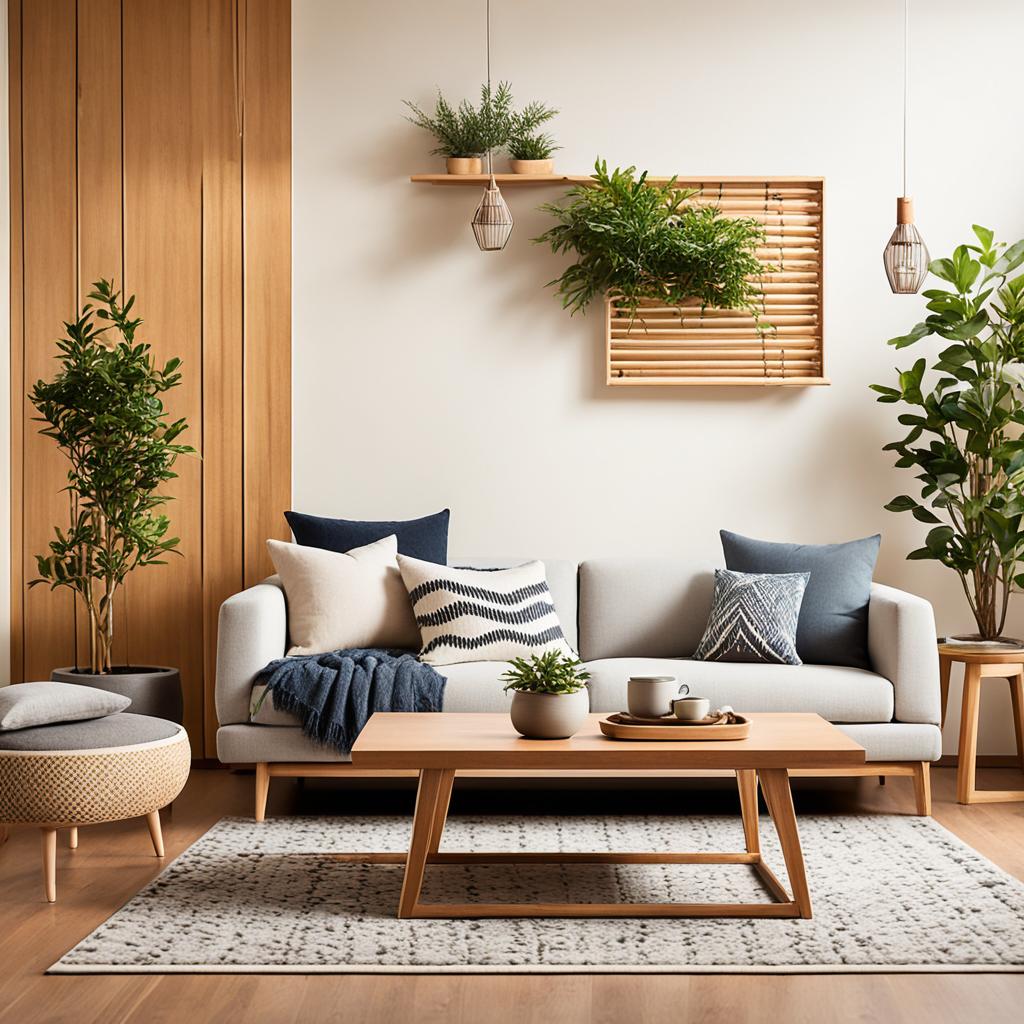
Japandi design combines natural elements, calming colors, and practical beauty. These elements create a peaceful space that helps you relax.
Natural Materials and Their Importance
Natural materials are key in Japandi furniture trends. Wood, stone, and bamboo add warmth and realness to your space. They also connect you to nature, making you feel calm and well.
Neutral Color Palette for Calmness
A neutral color palette is essential for Japandi’s calm vibe. Colors like white, beige, and gray set a soothing scene. They match well with natural materials and help you relax. This color scheme also makes your space timeless and easy to update with the seasons.
Minimalism and Functional Design
Minimalism is central to Japandi design. Every piece of furniture and decor must have a purpose. This approach makes your space look better and helps you stay focused. Choosing furniture that fits with japandi trends makes your space even more beautiful and cohesive.
Characteristics of Serene Japandi Living Spaces
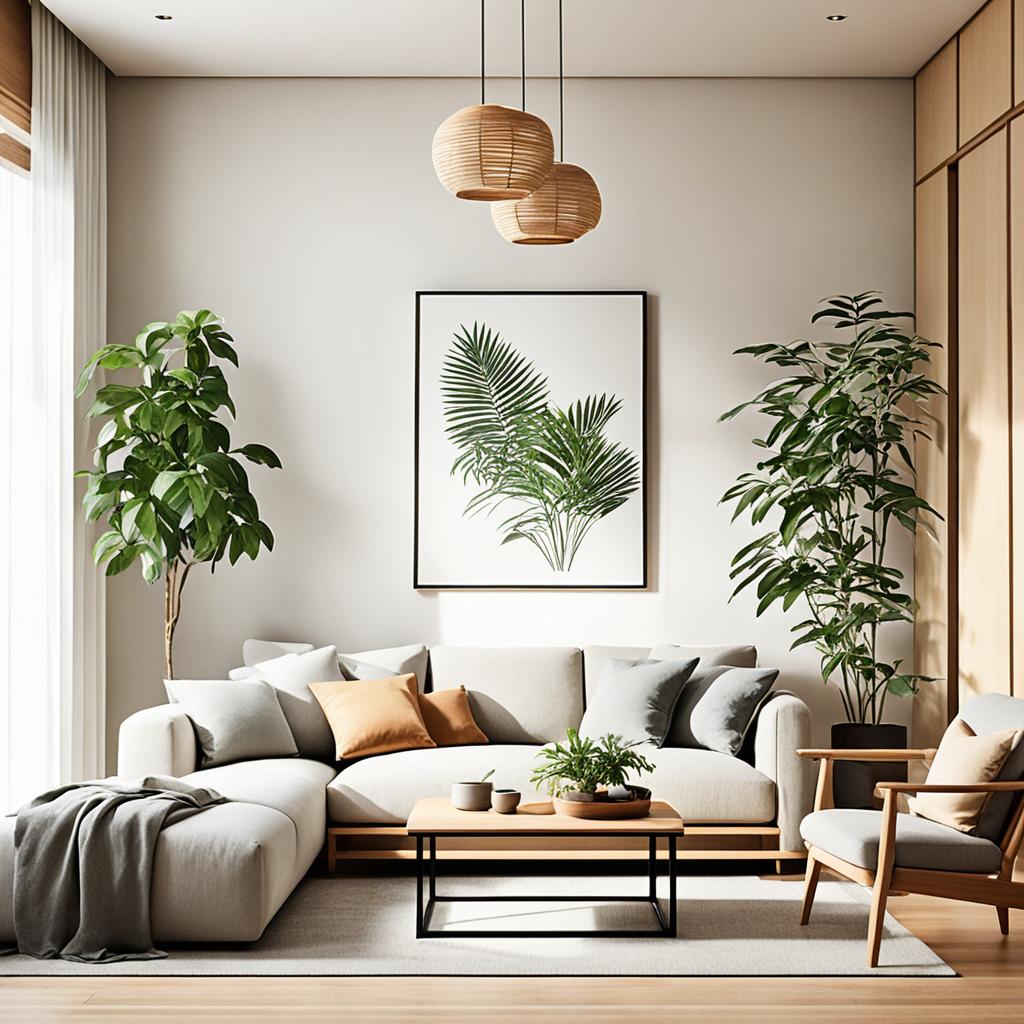
Serene japandi living spaces mix functionality with tranquility. They focus on comfort and keep a minimalist style for relaxation. Important features like textiles and clean lines help create peaceful environments.
Creating Cozy Atmospheres with Textiles
Textiles are key for a warm and welcoming space. Soft materials like wool and linen are great for cushions, throws, and curtains. They add comfort without taking away from the minimalist look. Adding layers of these textiles makes the space cozier, creating a calm vibe.
Using Clean Lines for Visual Balance
Clean lines are what make a japandi living space serene. Choosing furniture and decor with simple shapes brings order and balance. This makes the room look clear and calm. Every piece should have a purpose, sticking to the minimalist japandi style.
Creating a Cohesive Color Palette
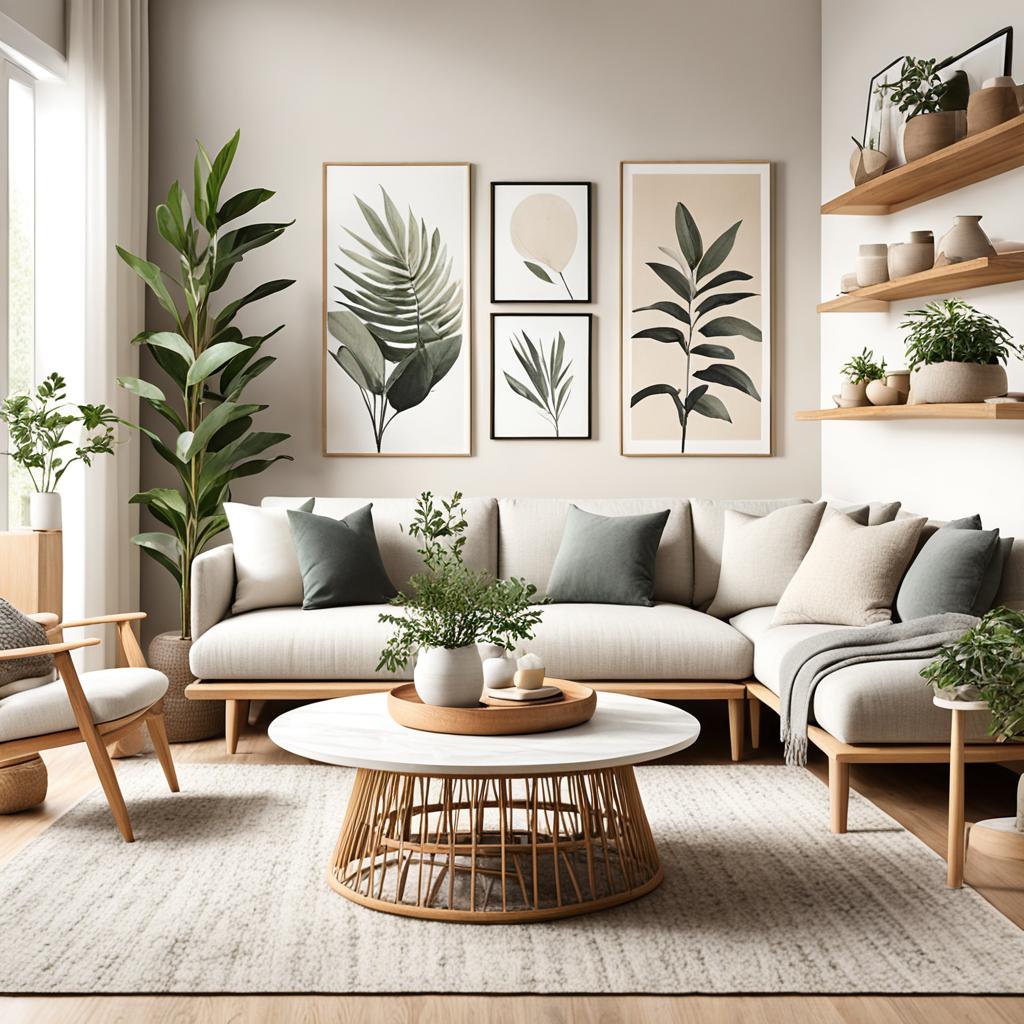
Creating a cohesive color palette is key in Japandi interior design. It brings harmony to spaces by blending Japanese and Scandinavian styles. Using neutrals as a base lets other design elements stand out without feeling too much.
The Role of Neutrals in Japandi Interiors
Neutrals like whites, grays, and beiges are vital in Japandi design. They make spaces calm and support relaxation and mindfulness. These colors work well with natural materials, adding elegance and function to the space.
Incorporating Earthy Tones for Depth
Earthy tones such as warm browns, soft greens, and muted terracottas add richness to the design. They connect us to nature and add depth to the space. Using these colors in furniture and decor makes the space more interesting and promotes well-being.
Japandi Furniture Selection: Form Meets Function
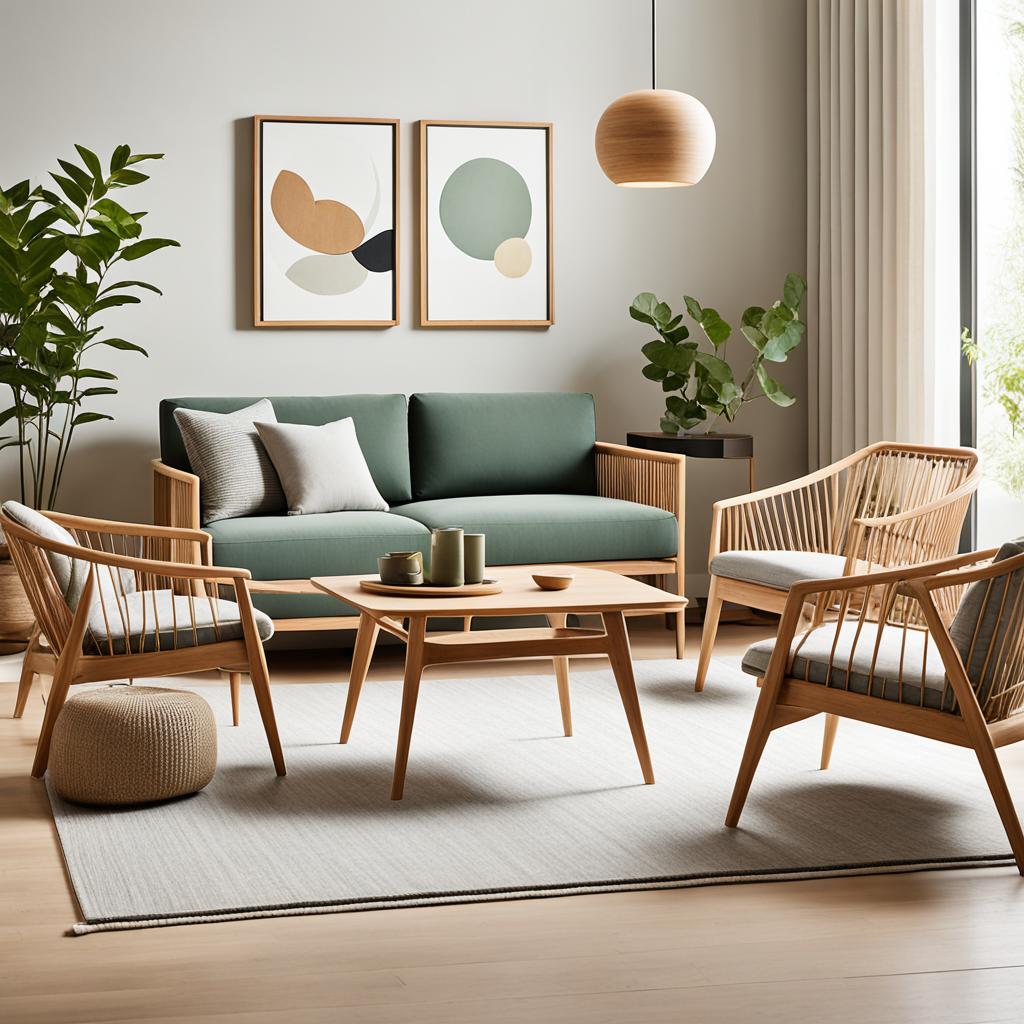
Choosing the right furniture is key to a space that shows off modern japandi design. Pick furniture that is both minimalist and multi-purpose. This way, your living area stays useful and looks peaceful. It also makes it easy to change your space for different needs without losing style.
Choosing Minimalist and Multi-Purpose Pieces
Minimalist furniture loves clean lines and simplicity. Look for items that do more than one job, like a coffee table with storage or a sofa bed. This approach makes your space more efficient and fits well with japandi furniture trends. It also keeps your space looking neat, which adds to the calm feel.
Natural Materials in Furniture
Using natural materials like wood and rattan is important in modern japandi design. These materials bring warmth and comfort, making your space feel cozy and connected to nature. Choosing furniture made from sustainably sourced materials is also good for the planet. It makes your living space look good and helps the environment.
Japandi Decor Ideas for Minimalist Living Rooms
To make your living room peaceful, the right decor is key. Japandi decor ideas focus on simplicity but still make a big impact. They blend Japanese and Scandinavian styles for a unique look.
Selecting Simple Yet Impactful Decor Items
For a minimalist living room, choose decor that stands out but doesn’t take over. Think about geometric sculptures, sleek vases, and simple artwork. Using natural materials like wood, stone, or ceramic adds an organic touch.
Maintaining Openness and Clarity in Decor
Keeping things organized is important for a calm living space. Make sure surfaces are clean and arrange decor thoughtfully. Using hidden storage keeps things tidy and follows the Japandi philosophy of simplicity.
Enhancing Your Japandi Living Room with Lighting
Lighting is key in making Japandi interiors calm and peaceful. Mixing natural and artificial light helps create a space for relaxation and balance. Learning about lighting techniques is important for improving your Japandi look.
Natural Light and Its Benefits
Using natural light can change a room for the better. Placing windows right can let sunlight into the room, making it feel open. This light makes Japandi design’s natural materials stand out, showing off textures and colors.
Being close to nature helps make a space peaceful, which is great for Japandi interiors.
Choosing Ambient and Accent Lighting
Soft ambient lighting is a must for a complete lighting plan. Choose simple lights that match Japandi’s clean style. Pendant lights or floor lamps work well for this.
Accent lighting, like wall sconces or spotlights, highlights special decor or art. This adds depth and makes the space look better. Picking the right lights lets homeowners create calm spaces that welcome relaxation.
Living Room Japandi: Blending Old and New Elements
Mixing old and new styles is key to modern japandi decor. It makes a space both unique and peaceful. By combining antique and modern items, you can make your living room stand out. This keeps the calm and simple feel that japandi style is known for.
Incorporating Vintage and Contemporary Pieces
Choosing furniture and decor from different times can make your living room look better. Here are some tips:
- Mix vintage wood furniture with contemporary metal accents.
- Use antique ceramics alongside modern glass decor.
- Consider a stylish vintage rug to complement a minimalistic sofa.
Every item, old or new, should have its own story. This makes the space reflect your history and creativity.
Using Art to Add Personality
Art is key to making a japandi living space your own. It adds beauty without making the room feel too busy. Here are some ideas:
- Choose artworks with calming colors that match the room’s neutral look.
- Mix traditional and modern art for a lively feel.
- Put art in a gallery-style layout to draw attention without losing the room’s unity.
Using these tips, you can make a living room that shows off japandi style and your personal taste.
| Vintage Elements | Contemporary Elements |
|---|---|
| Antique wooden table | Sleek metal chairs |
| Traditional ceramic vases | Modern glass sculptures |
| Vintage patterned fabrics | Neutral solid-color throws |
Conclusion
The Japandi aesthetic combines Japanese minimalism with Scandinavian functionality. It offers a unique way to make living spaces calm and beautiful. By using open design, natural materials, and a neutral color palette, you can create a peaceful atmosphere.
This article has shown us the key parts of japandi interior design. We’ve seen how each part adds to the calmness of the living room. Adding minimalist furniture, decor, and lighting can turn your space into a peaceful oasis. It encourages relaxation and mindfulness.
Try this style in your home to improve your living experience. The ideas shared here can help you create a living room that is both stylish and peaceful. By combining these elements, your living room will become a cozy retreat that reflects Japandi design.



